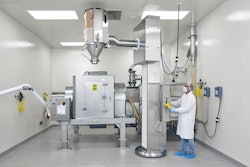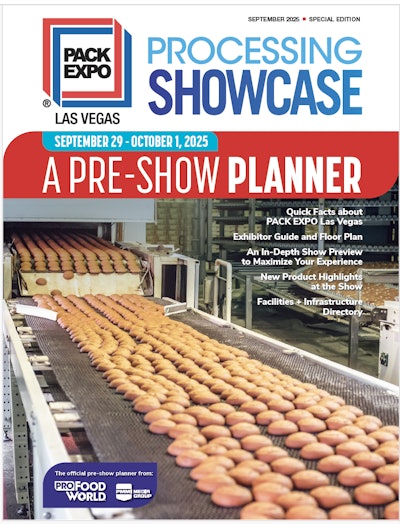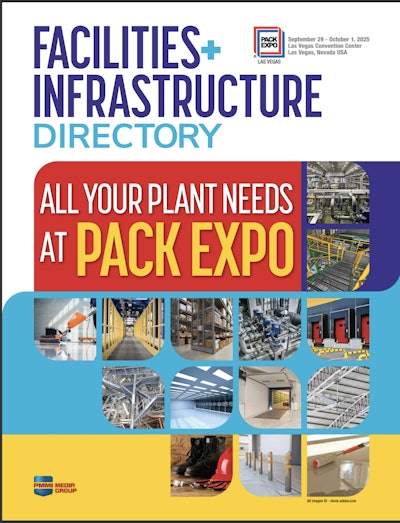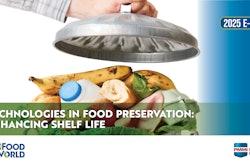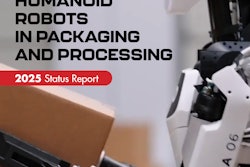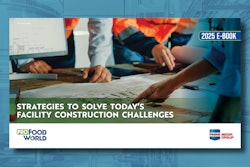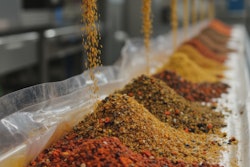Palletizers and depalletizers are the muscle behind packaging lines, handling everything from neatly stacking cases on pallets to efficiently unloading them for filling. In this Package This episode, explore the latest in mechanical and robotic palletizing technology—including high-speed in-line systems, space-saving cobots, and hybrid solutions that adapt to your production needs.In less than five minutes, you’ll find out how these machines boost efficiency, improve safety, and keep supply chains moving. Watch now to see palletizers and depalletizers in action!
Hey there! Welcome back to "Package This"!
If you could name one group of machines that do the “heavy lifting” in packaging, it would probably be palletizing and depalletizing systems.
Palletizers stack cases, sacks, and other bulk packages neatly on pallets as they head off the packaging line, are stretch-wrapped, and are prepared for distribution. Depalletizers do the opposite: they remove items from containers at the beginning of filling lines.
Today’s palletizers are divided into two main types: conventional palletizers (also called mechanical palletizers), which use mechanical components like conveyors, lifts, and clamps to do the lifting and stacking, and robotic palletizers.
High-Level Conventional Palletizers
High-level conventional palletizers operate at an elevated level, often on high-capacity production lines where speed and the ability to handle large volumes are paramount. High-level infeed conventional palletizers, like this one from Columbia, are generally faster and have a comparatively smaller footprint than mechanical floor-level palletizers, which we will see in a minute.
These machines are engineered to handle virtually any package type with modular layouts and gentle product handling. Another advantage: all of Columbia’s conventional palletizers come with advanced Product Manager graphic-based HMI for unlimited pattern-forming capabilities and zero time/zero tool changeovers.
Floor-Level Palletizers
Now let’s get back on eye level with floor-level conventional palletizers, also called low-level palletizers. Perfect for smaller operations or lower volume lines, floor-level palletizers keep the line moving constantly. The entire machine can be viewed from the facility floor.
This floor-level machine from Columbia is designed for convenience, versatility, and rugged performance. Each floor-level palletizer from Columbia is designed to fit where space is at a premium using modular designs that are easily adapted to match space and product flow requirements. Columbia’s palletizers come standard with an industry-leading category 3 safety package to help ensure worker safety in the facility.
In-line Palletizers
Columbia's in-line mechanical palletizer machines, designed for medium to high-speed operations and multiline applications, use a flow divider for precise positioning of packages on the layer forming area, ensuring accurate placement until a layer is complete and transferred onto the pallet.
Built for safety, flexibility, and performance, these easy-to-operate palletizers handle all package types at speeds up to 200 cases per minute and a guaranteed minimum uptime of 98%. This palletizer features zero time/tool-less changeover, industry-leading tools like the Product Manager HMI interface, and Smart Diagnostics with enhanced video playback.
Robotic: Cobots & Mobile
Now we turn to robotic palletizers, an option for many brands looking for efficiency and flexibility, starting with collaborative robots, which have grown in popularity in recent years.
Collaborative robots (or cobots) are small, highly mobile, and usually handle low-volume, floor-level palletizing tasks. These palletizing cobots from Rychiger Canada are a complete modular palletizing solution with zero access guarding safety features, allowing easy relocation between production lines.
Rychiger’s compact, flexible, and mobile equipment is designed with pallet and product traffic control capabilities, providing a turn-key solution to customers specifications.
The cobot has features that allow it to avoid work stoppage of upstream equipment caused by intermittent safety breaks in the palletizer; for example, if someone is walking too close to the unit.
Other robotic palletizers
Some other robotic systems include pick-and-place robotic palletizers. These robots swing back and forth from a pick area to place them on a pallet, stacking row by row.
Layer-forming robotic palletizers take products fed into the palletizing area on conveyors and arrange them into layers with end-of-arm tools that turn and push boxes neatly and efficiently.
Row forming robotic palletizers group boxes or cases together and as they accumulate are formed into a single row unit that is lifted together onto a pallet.
Also on the robotic palletizing market, you may find hybrid robotic palletizers, which combine any of the technologies we mentioned into a single, customized robotic palletizer.
Depalletizers
Finally, just as palletizers stack products onto pallets at the end of the line, there is a dedicated set of machines that does just the opposite. Depalletizers are specialized robotic or mechanical machines that take empty containers such as plastic or glass bottles from pallets, transferring them directly onto a conveyor or another handling system for cleaning and preparation before filling.
And there you have it, an overview of what palletizing and depalletizing machines are all about.
Thanks for sticking around to learn about palletizing and depalletizing equipment. For more videos on packaging equipment and supplies, subscribe to Packaging World’s Youtube channel and get all of the videos in the Package This series.
And if you’re looking for palletizers or other equipment, visit PMMI ProSource at ProSource.org, a searchable directory with over 1,000 packaging and processing solutions.
Until next time, keep on packaging!













